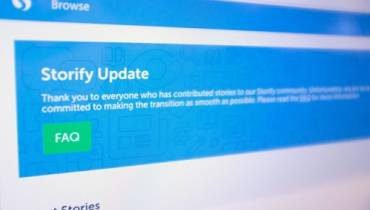How to Use Ethical Employee Monitoring to Boost Productivity

Nowadays, using time tracking and monitoring solutions to track employee activity is one way to keep tabs with workers and identify areas for improvement. Companies also monitor their workforce to catch high-risk behaviors and manage resource utilization.
And thanks to newer advanced technologies, employee monitoring software are now more common and convenient than ever. It’s no surprise that the demand for employee tracking software rose by a whopping 54% in 2021, according to a survey by Top10VPN.
For companies that have remote workers, it makes a lot of sense to keep tabs on the remote workers since physical supervision is absent in teleworking. These companies can use monitoring tools to track project progress, calculate billable hours, and asses productivity.
While the positive effects of employee monitoring software are many, it does come with some downsides. Unethical employee monitoring risks decimating employee morale leading to declined productivity and a toxic workplace in the long run.
When companies monitor an employee's every move, they signal distrust, which can lead to employee demoralization and ultimate disengagement. Worse still, it is not only unethical, but also considered illegal to monitor employees without their knowledge or consent.
The Impact of Employee Monitoring on Productivity
You may wonder whether employee monitoring affects productivity. The simple answer is yes. If done right, brands can detect workflow lapses and fix them, boosting productivity in the process.
However, things can go the opposite way if monitoring practices don’t sit well with employees. That’s because every worker’s performance is tied to their peace of mind and sense of safety.
Employees who feel overly or unethically monitored get distracted and lose trust in their work environment. This creates a hostile workspace as time goes on.
A survey by Polfish and ExpressVPN to determine the impact of employee monitoring reported that 56% of respondents feel anxious and stressed about their employers’ monitoring activities. In addition, 32% said they take fewer breaks as a result, and 41% are constantly worried about being surveilled.
All that being said, you can still boost productivity with ethical monitoring practices. According to another study investigating the impact of monitoring on employees, profits went up by 7% when workers knew they were being observed.
A minimally invasive, fair, and transparent monitoring practice will keep your employees at ease and foster a healthy workplace. But how do you monitor your employees ethically and boost productivity?
Tips for Ethical Employee Monitoring to Boost Productivity
When your workers are comfortable with your monitoring policy, you’ll reap all the benefits of employee surveillance, especially for remote workers.
To boost productivity, make sure you’re monitoring your workers in the right way. Let’s see how to do that and some of the best tips for ethically monitoring your employees.
1. Make sure employees understand the reasons for monitoring
You have to ensure your employees are okay with monitoring if you don’t want it to affect their performance negatively. Most people hear about surveillance and it rings many red flags. Telling them why they need to be monitored and how it will be done to help the company can ease their minds.
For starters, time tracking and monitoring applications are required to correctly calculate paychecks for those paid by the hour. Employers can even find out workers are overburdened after monitoring them and gathering data on their activity. This way, policies can be implemented to reduce their workload.
Moreover, through monitoring, suspected employee malpractice and cases of workplace abuse can be discovered and addressed. Monitoring systems can also help fish out lazy co-workers.
Lay out such points to convince your employees that monitoring can work in their best interests.
2. Use monitoring applications that respect privacy
The rise of remote work during COVID pandemic led to a corresponding surge in remote tracking solutions. For example, companies use time and project tracking programs to monitor at-home workers’ productivity. Many have done that successfully without breaching sensitive personal space and data.
Make sure your company uses an employee time tracking app designed to monitor workers ethically. For example, a time tracker with screenshots can be programmed to blur out the shots. This way, employers know what app the employee is using without seeing its contents.
Some applications can be turned off by employees to stop activity tracking. Using this kind of program gives workers the peace of mind that they have the autonomy to dictate when they’re monitored.
3. Be transparent
Keeping employees in the dark about monitoring practices is an sure way to lose their trust and build a toxic work culture. At some point, the truth about work surveillance will come to light.
When people find out they’ve been monitored without their consent, a whole lot of issues, including stress, anxiety, and anger, will come up. It can even lead to a lawsuit by workers against your company. Apart from the possible expensive lawsuits, you’ll experience a sharp decline in productivity and company reputation.
On the other hand, keeping workers in the loop about a new policy gives them a sense of belonging and respect. Remote workers, for example, expect some form of monitoring since they work from home without physical supervision. That said, they’re still entitled to a level of privacy.
Ensure you have an open discussion with your remote staff to inform them about monitoring and get their opinions. Let them know the type of data you’ll be gathering and how you’ll store them.
4. Create clear boundaries and maintain them
Evaluate the extent of intrusion caused by your monitoring activity. For example, do you monitor employees outside working hours? Make sure there are clear Dos and Don’ts about your policies.
For instance, you can implement a policy that forbids monitoring outside working hours. You could also prohibit gathering personal and sensitive data, such as social media and personal email info.
5. Tell them how the data collected will be used
Even if you gather only work-related data, you must ensure that the data is only used for business purposes. This way, you’re securing your employee’s peace of mind that their sensitive data and work information won’t make it to the public space or come back to bite them.
Sometimes, you can end up collecting personal info if your employee uses the same device for work and personal use. In such a case, ensure the personal data won’t be made public or considered in any official proceedings, especially promotion considerations.
That can ease employees’ concerns and make them more comfortable when using their devices for work and any personal use as well.
6. Encourage them to consider keeping work and personal devices separate
If your company has the resources, you can facilitate workers to get separate devices for work to prevent them from using personal devices and having personal data and usage monitored.
Fore example, you can provide official laptops and smartphones to be used solely for work. This way, employee monitoring will be less intrusive since nothing private makes it to these devices.
If you can’t provide these resources, ensure employees can turn the monitoring apps on and off. For example, remote workers should be able to turn on or off time trackers to measure billable hours.
That means at-home workers will have to turn on the time trackers provided by the company if they want an accurate paycheck. Since they’re incentivized to keep the program active during work hours, you’ll have all the data you need to monitor and track their productivity.
7. Assure employees you’re sticking to state laws
There are state labor policies and privacy laws that protect employee privacy. These laws differ from country to country and state to state.
Ensure you keep them in mind when drafting your employee monitoring and surveillance policies and strategies. Your employees should also know that you’re keeping to these laws.
When you have government laws in mind and commit to strictly abide by them, it will be less tempting to color outside the lines from time to time.
8. Optimize your ethical employee monitoring policy
Now that you know how to track your remote workers’ activities ethically, it’s time to create a policy that will govern workplace monitoring. This policy should cover the following:
- Why you need to monitor workers
- What you will be monitoring
- The tools that will be used to monitor employee activity
- When they will be monitored
- What the gathered data will be used for
- Consequences of flouting monitoring rules
Throughout the whole process, consult with employees to get their takes on certain matters. You should know aspects they feel comfortable with and gather suggestions on what they’d like to add. Also, remember to work within the confines of the law always.
In Conclusion
While employee monitoring can put employees on edge and cause some worries, it won’t be a source of concern if you’re transparent and fair. You can then use the data you collect to fine-tune your workflow and task delegation to maximize employee productivity.




















